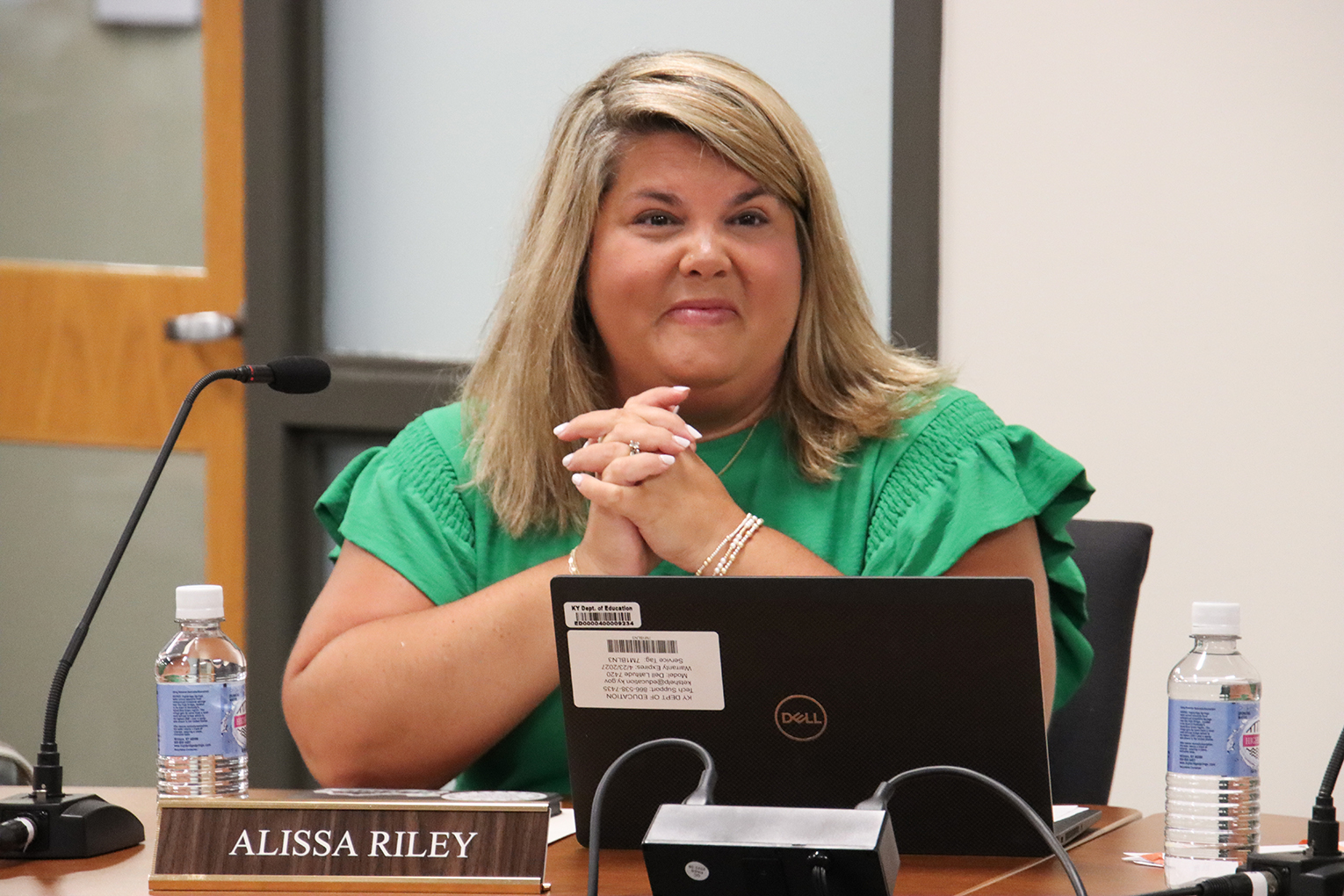
Kari Patrick
By Kari Patrick
kari.patrick@shelby.kyschools.us
It is easy to think that no one can fill our shoes when we leave a teaching job behind. I recently had to hire a teacher to fill the position of a dear colleague and incredible teacher. Sitting across the table from young, bright-eyed, recently graduated teachers, I found myself lamenting the loss of a great teacher.
I felt hopeless walking into the interviews; it seemed impossible to hire a replacement so late in the school year. I sat across the table with sweaty palms and a shaky voice as if I were the one being interviewed. Someone must be hired, I told myself. Eighty students were relying on us to hire a great teacher. All students deserve great teachers, but can we replace great teachers with great new teachers? Even more importantly, how can we ensure that all new teachers become great teachers?
If we’re being totally honest, no one walks into a new job 100 percent prepared to be GREAT on day one. But we still should expect greatness out of our new teachers – much like we do with students. We expect students to reach or exceed proficiency on Kentucky Academic Standards and we should expect new teachers to reach or exceed proficiency on the Danielson Framework.
But expectations can only go so far. Students and teachers alike need graduated scaffolding and models of proficiency. New teachers need a gradual release of responsibility just like more experienced teachers give students.
Much like we scaffold our students’ learning experiences, experienced teachers and teachers of expertise can support new teachers through collaborative learning experiences that only master teacher mentors can truly provide. In the case of the new hire, this came in the form of first understanding the new teacher’s role; and it was the responsibility of our department to clarify those expectations. She needs a safe professional learning community in which her needs are clearly established.
It’s important to me that a new teacher isn’t planning 100 percent of her lessons on her own and that she is discussing and reflecting with me and other teachers of expertise regularly. We also must model that great teaching includes analyzing data, asking deep questions, exploring learning strategies and evaluating students’ needs.
Throughout Kentucky, many teachers already open their practice to new teachers through the Kentucky Teacher Internship Program (KTIP), instructional coaching and informal mentoring. KTIP is still a valuable asset to meaningful teacher induction. However, these traditional models do not always fully prepare new teachers to meet the increasing demands placed on them.
New teachers are often expected to begin with many students and multiple course preps, all while crafting a teaching style and participating in a new school community. We tell them to “fake it ‘til you make it.” We do new teachers a disservice by spreading them too thin, by not allowing them to hone in on one area of their craft and telling them to fake expertise where they are most likely a novice.
Fortunately, there are many successful teacher leaders who already have the skills to help new teachers meet the wide range of demands being placed on them. The recently released document supporting teacher professional growth – the KY Teacher Leadership Framework – succinctly notes that many teacher leaders already possess these skills, but they are not officially utilized in many districts. We need to use these invaluable resources to support new teachers in highly intentional, systematic ways across the state.
A well thought out district or schoolwide induction plan, created by teachers of expertise and administrators, is ultimately the best way to cultivate and transform new teachers into great teachers. As we move into summer, I hope that teacher leaders will take the time to work with district and school administrators to improve how they tend to the incoming crop of teachers. All educators have a responsibility to professionalize our career and that movement starts by helping the next generation of teaching professionals hone their craft.
Open up a dialogue with master teachers in your school and district. Look at your district’s Equity Plan and TELL Survey results. Ask yourself, ‘How will we put a great new teacher in front of our students on day one?’ A hybrid role that co-teaches with new teachers? A professional learning opportunity led by teachers? Intentional planning of a new teacher’s schedule?
The best solution is one crafted by teachers with the support of administrators, because in the end, teachers will be the implementers of the new policies. We also should be involved in the creation of these policies.
Teacher induction programs make the difference between a new teacher drowning under the complexity of the teaching craft and a budding new teacher learning how to become the great teacher that every student deserves.
What are you doing to put an effective teacher in front of every child in your school?
Kari Patrick teaches at Shelby County High School (Shelbyville), where she serves as English department chair and teaches 10th-graders. Patrick is a Hope Street Group Kentucky Teacher Fellow and a Next Generation Instructional Design Teacher. Follow her @MrsKariPatrick.



Your recommendations would surely help stem the tide of new teachers leaving the profession before they even have a chance to become experts.